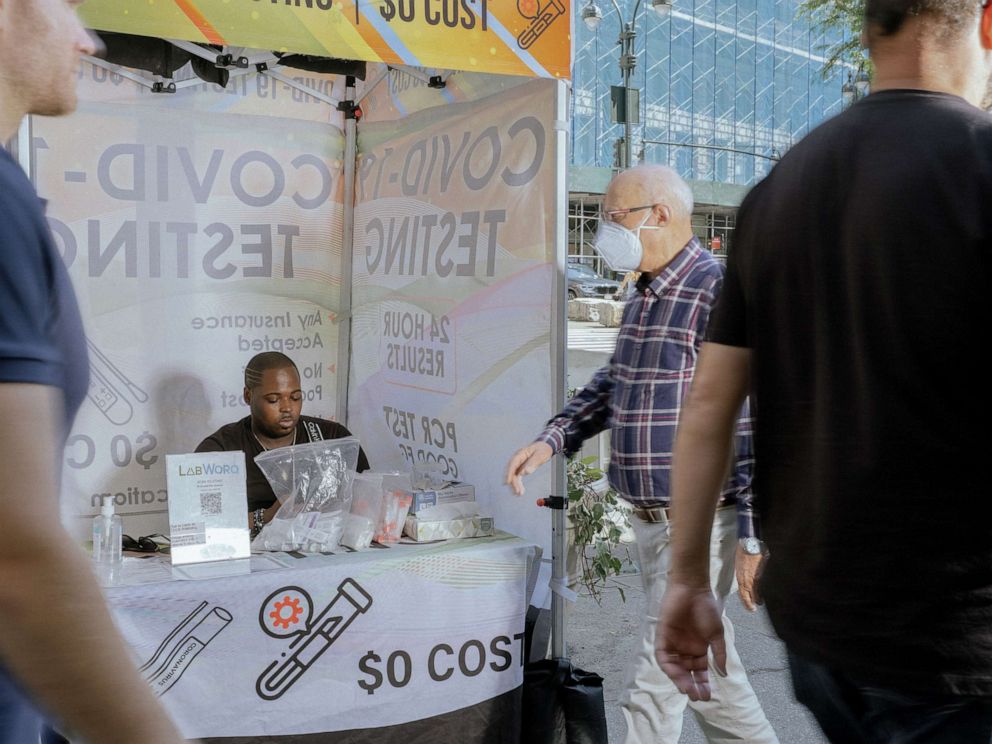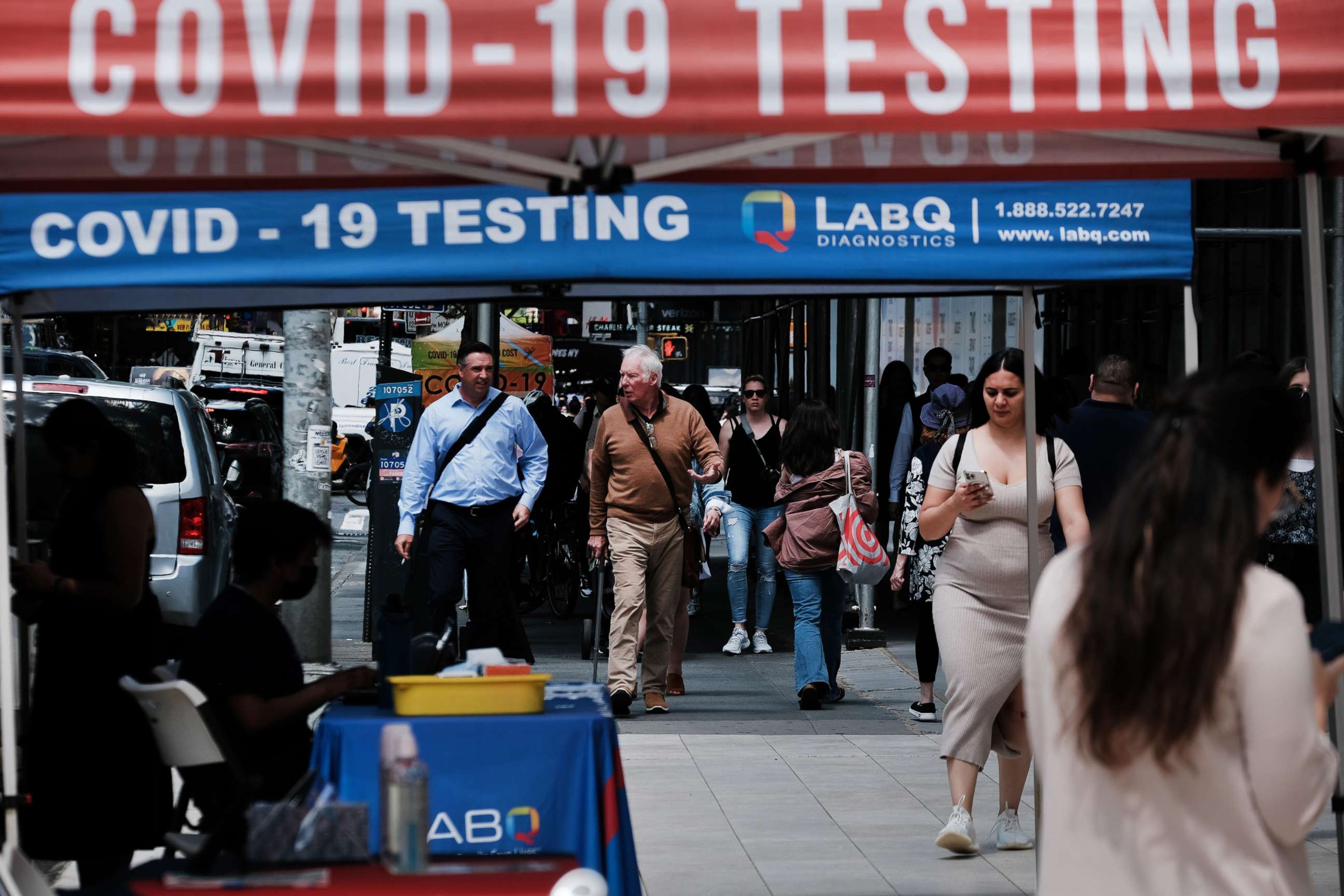New York City's COVID test positivity rate surpasses 10% for the first time since January
Cases have also risen nearly 10% from two weeks ago, data shows.
New York City's COVID-19 test positivity rate is skyrocketing, indicating that a sixth wave of the virus could be around the corner.
As of June 26 -- the latest date for which data is available -- the test positivity rate hit 10.05%, according to the city's Department of Health & Mental Hygiene.
It marks the first time the rate has surpassed 10% since Jan. 22, when the omicron wave was still hammering the Big Apple.
Experts previously suggested the true test positivity rate could even be higher due to the number of people testing positive with at-home rapid tests and not reporting their results to health officials.
This reflects trends also being seen on the national level, data from the Centers for Disease Control and Prevention shows.
As of June 26, the seven-day average for the COVID test positivity rate in the United States was 15.65%, the highest figure recorded since Feb. 3.
Additionally, COVID-19 cases are also on the rise, with the seven-day average sitting at 3,216, city data shows -- a 9% percent increase from the 2,946 average recorded two weeks ago.

However, hospitalizations are continuing to fall while deaths remain flat.
The majority of COVID-19 cases continue to be among the unvaccinated. As of June 11, the case rate among the unvaccinated was 1,046.04 per 100,000, data from the New York health department shows.
Comparatively, the rate among those who are vaccinated and boosted was four times lower at 259.4 cases per 100,000, while the rate among those vaccinated but not boosted even lower at 156.4 per 100,000.
Earlier this week, Dr. Jay Varma, an infectious diseases physician and former Mayor Bill de Blasio's senior advisor for public health, tweeted this is likely the beginning of a wave caused by BA.5, an omicron subvariant.
"BA.5 was [around] 17% of cases two weeks ago so [it's] likely much higher now," he tweeted. "Experience from other countries means there will be another big increase in NYC COVID-19 infections, including among those who have had omicron in [the] past few months."
Varma added, "Unclear from lab data [and] elsewhere how much this will increase hospitalizations & deaths. At a minimum, I can be confident predicting that BA.5 will lead to more days when people are out of work, kids home from school/camp and more people suffering from long COVID."
Across the U.S., BA.5 makes up 36.6% of all COVID-19 cases, CDC data shows, which is more than double the prevalence from two weeks prior. Combined with another subvariant, BA.4, they make up more than half of all cases.
Meanwhile, BA.1 -- the original omicron variant -- accounts for no cases, according to the data.

"BA.4 and BA.5 have come out of nowhere the last two weeks." Dr. Roy Gulick, chief of the division of infectious diseases at NewYork-Presbyterian and Weill Cornell Medicine, told ABC News. "They are more transmissible than the other recent variants we've seen, they're less susceptible to antibodies both from previous infection or from vaccination -- but they don't seem to cause more severe disease."
In response, Dr. Peter Marks, director of the Center for Biologics Evaluation and Research at the U.S. Food and Drug Administration, announced Thursday the agency is asking COVID-19 vaccine developers, including Pfizer-BioNTech and Moderna, to develop a booster shot that can target the subvariants.
"As we move into the fall and winter, it is critical that we have safe and effective vaccine boosters that can provide protection against circulating and emerging variants to prevent the most severe consequences of COVID-19," Marks said in a statement.
In light of the rise of cases, Gulick recommends people still keep following known mitigation measures that work including avoiding large crowds and wearing a mask if crowds are unavoidable.




